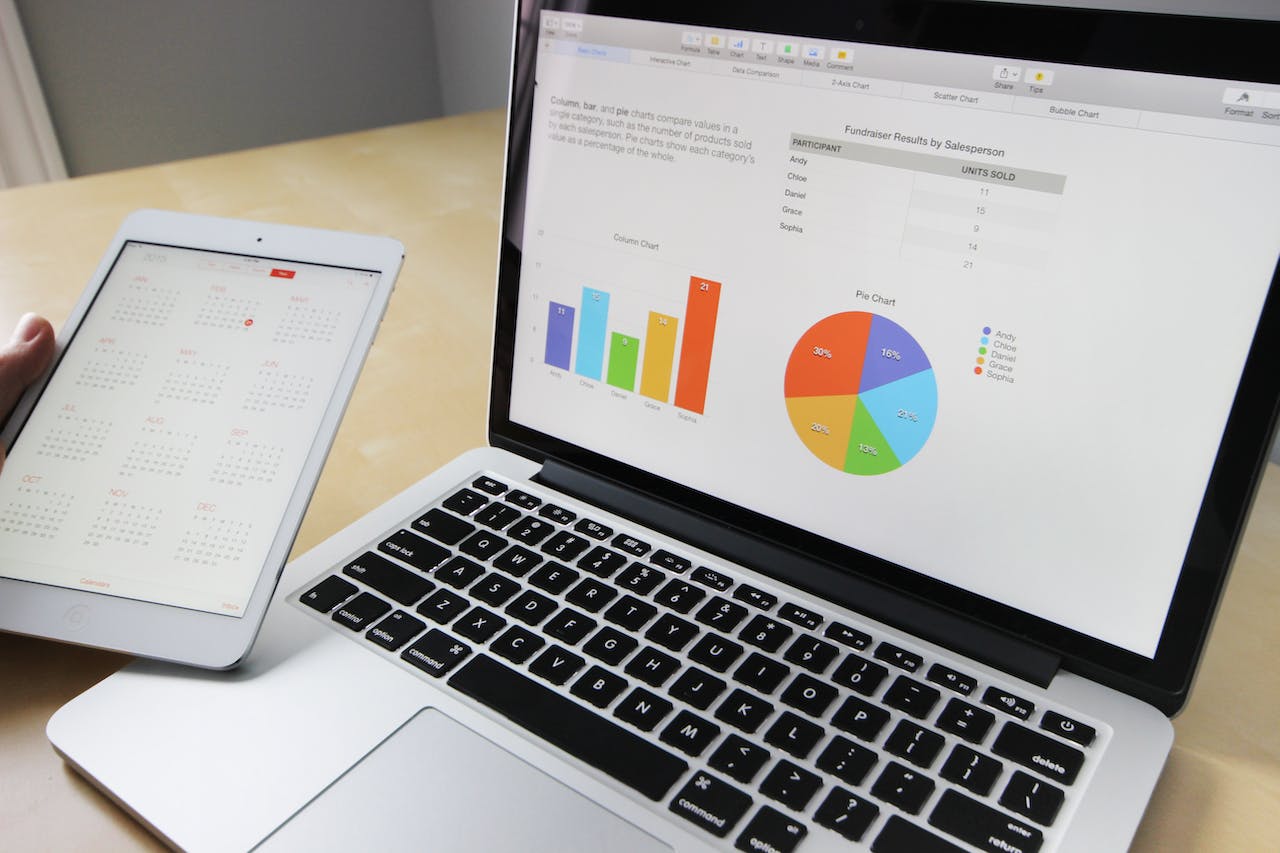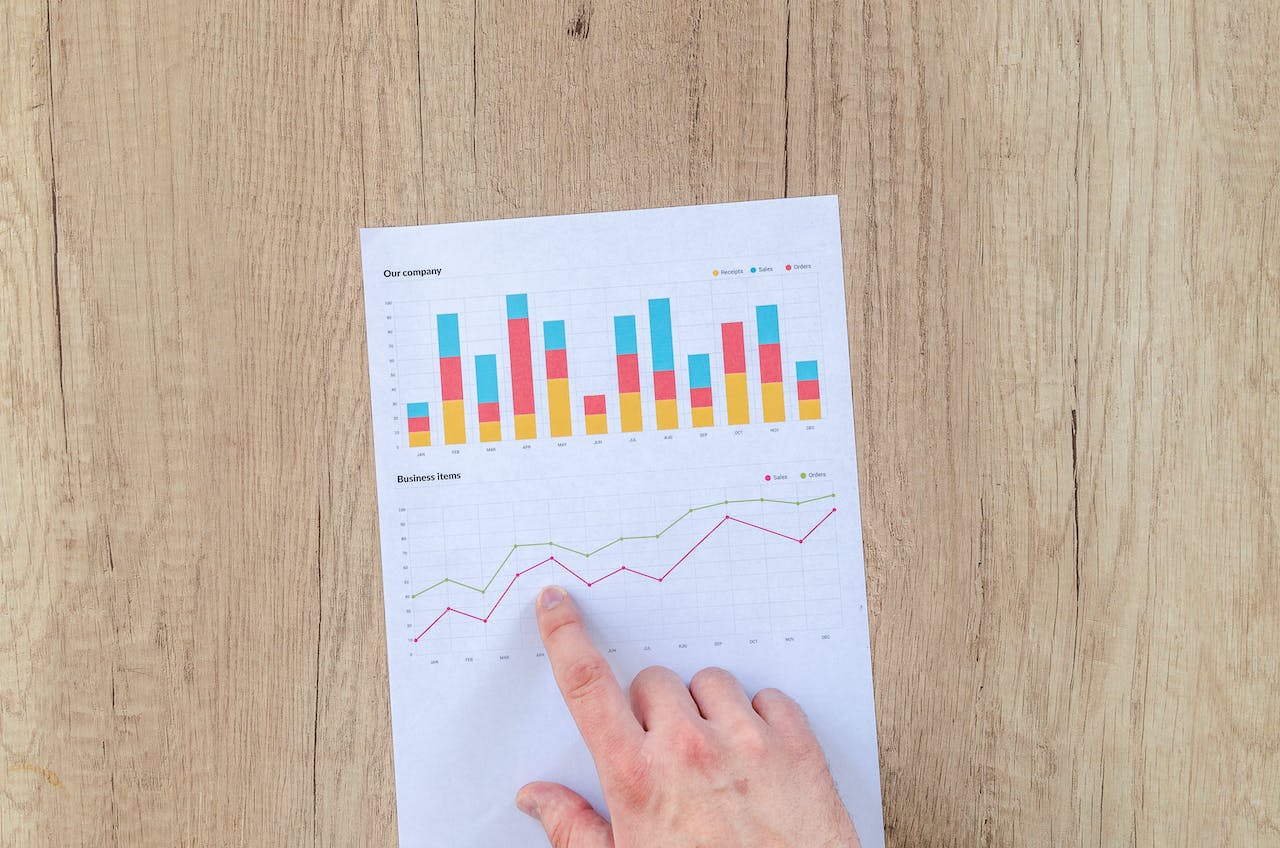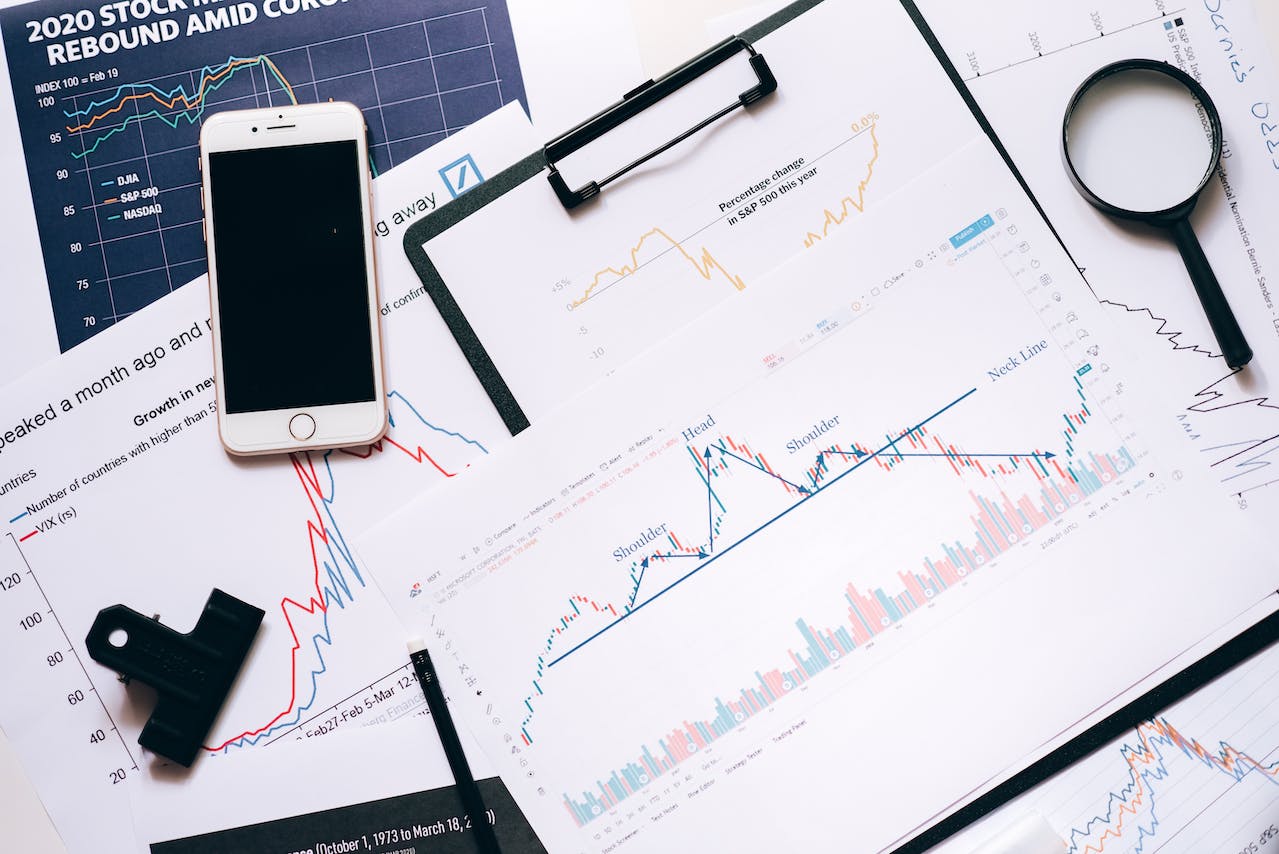
In this digital age, marketing depends more and more on ideas gleaned from data to be successful. Because there is so much information about customers, companies can change their marketing strategies to reach better and interest their audience.
You can't say enough about how critical data-driven ideas are to the success of marketing campaigns. Companies can learn more about their customers' habits, likes, and requirements by using data analytics. This helps them make marketing efforts that are more specific and personalized. In this article, we will be discussing maximizing marketing impact with Data Analytics.
What Is Data-Driven Marketing?
We should first get a basic idea of what "data-driven marketing" means before we talk about its benefits. Data-driven marketing is a way of doing marketing that depends on gathering, analyzing, and making sense of data from different sources to help make decisions.
This information can include anything from how customers act and what they like to market trends, information on how products are used, and measurements of how well a campaign is doing. Let's talk about what it means to gather, analyze, and make sense of data.
Data Collection
- Defining Data Sources - Finding the information sources that are useful for your marketing efforts is the first step in collecting data. Your website, social media pages, email campaigns, CRM tools, and other places can be some of these sources. Second-party data is data that you get from someone else. First-party data is data that you own.
- Data Gathering - Systematically get information from these sources. Tools like Google Analytics, platforms for social media analytics, and email marketing apps are beneficial in this process. Google Analytics can help you keep track of things like website traffic, page views, and how people use your site.
- Consent and Compliance - Follow the law and protect people's rights, like GDPR or CCPA. Make sure you have the proper powers to gather and use data, including data from your leads and customers.
Data Analysis
- Segmentation - When you analyze data, you have to divide your viewers into groups based on different factors. Some examples of this are demographics (like age, gender, and area), psychographics (like lifestyle and values), behavioral data (like past purchases and website visits), and more.
- Pattern Recognition- Look through your data for themes and trends. Are there behaviors, tastes, or traits that certain groups of your audience share in common? In the financial services industry, for example, customers who read material about planning for retirement are usually in a specific age range and are interested in long-term investments.
- Predictive Analytics- You can guess how customers will act in the future by using advanced data and machine learning.
Data Interpretation
- Understanding Insights- Making sense of the data analysis is part of interpretation. For instance, if you notice that your website doesn't get many visitors or sales during a particular month of the year, you might decide that your businessis affected by seasonality at that time and change your plans to reflect that.
- Formulating Hypotheses- You can make guesses about what's causing people to act in specific ways based on how you've interpreted the facts. In SaaS marketing, if you see that people who finish an onboarding lesson after a free trial are more likely to buy, you might think that this tutorial is an essential point of contact for conversion.
- Data-Driven Decision Making - facts interpretation leads to decisions that are based on facts. For example, look at the data and see that a specific piece of content consistently gets a particular group of your audience in the financial services sector to engage and convert. You can make more content that is more relevant to their interests or come up with a better way to distribute the content piece that you already have.
The Roi Roadmap - Maximizing Marketing Impact Through Data Analysis
Step 1 - Define Your Goals
Make sure your goals are clear and measurable before you try to figure out your marketing ROI. What do you want to get out of your media campaign? Do you want to get more people to your website, get more leads, make more sales, or raise knowledge of your brand? Setting clear goals will help you figure out how successful you've been.
Step 2 - Determine Costs
To figure out media ROI, you need to carefully keep track of all the costs of your media strategy. Some of these are the prices of media placement, which means buying ad space or time on TV, radio, print, and the internet. Graphic design, video creation, and copywriting are all examples of advertising design and production costs.
Include the prices of sending physical items like brochures and direct mail. Software and hardware prices for ads, such as tools for managing and tracking media campaigns, are essential.
When figuring out labor costs, it's essential to think about how much time and work the team put into planning, carrying out, and analyzing the campaign. A company can only get a good idea of its marketing ROI by taking all of these cost factors into account.
Step 3 - Track Conversions
To find out how well your media campaign worked, you need to set up a complete tracking system that is focused on specific conversion measures that are in line with your campaign goals. For example, if the main goal is to boost sales on e-commerce sites, it's essential to keep a close eye on the direct sales that the campaign brings in.
Instead, if you want to get more leads, carefully keeping track of how many leads you get through the campaign will give you valuable information. Using tools like Google Analytics is very helpful when the goal is to measure things like brand recognition or more people visiting a website.
These tools make it possible to track more website visits and engagement, which are vital signs of how the campaign affected brand exposure and online presence. Businesses can get helpful information about how successful and efficient their media efforts are by planning how to link conversion tracking with marketing goals.
Step 4 - Calculate Revenue Generated
Figure out how much money your media effort brought in altogether. For online purchases, this is easy because you can easily link specific sales to the promotion. But for other goals, like getting more leads or making people aware of your brand, you might need more complicated attribution models to figure out how much money you will make.
Step 5 - Subtract Costs From Revenue
Now, take the total amount of money you made from the campaign (Step 4) and remove the total amount of money you spent on it (Step 2). Here is the method for figuring out media ROI:
ROI = (Revenue - Cost) / Cost
Step 6 - Express Roi As A Percentage
To get a percentage out of your ROI number, multiply it by 100. You'll have a good idea of the return on investment in terms of the percentage gain.
Step 7 - Analyze And Optimize
After figuring out your media ROI, it's time to look at the results. If your ROI is positive, it means that your effort made you more money than it cost, which is a good thing. But don't stop there. Keep an eye on your social efforts and make changes based on the information you've collected. Over time, your ROI will go up as you try out new tactics and channels.
Benefits Of Content Marketing Analytics
These days, it's essential for businesses to use content marketing statistics to their advantage. This method involves using valuable data to improve content strategies, which in turn improves the target audience's engagement, reach, and overall effect.
Let's look at the benefits that come from combining content marketing and data in this intelligent way.
Informed Decision-Making
Content marketing analytics gives businesses the information they need to make intelligent choices by showing them how well their content strategies are working. Marketers can find trends, figure out how people act, and see how well different types of content work by analyzing data.
This knowledge helps make content marketing strategies better by showing what works best for the target audience. This leads to better strategic decision-making and resource allocation.
Targeted Content Creation
When used in content marketing, analytics allow for a data-driven method of making content. Marketers can make sure their content fits the needs and wants of their audience by knowing what topics, forms, and styles they like.
This makes sure that the content is more practical, engaging, and likely to get and keep the attention of the people you want to reach. Making content turns into a planned process that works with the data from analytics to make content that connects with the audience.
Optimized Distribution Channels
Content marketing analytics show how well different methods of distribution are doing. Marketers can see which platforms bring in the most visitors, keep them interested, and turn them into customers.
With this information, distribution strategies can be made better by focusing on the platforms that reach the target group the best. Analytics help marketers put their resources where they work best, whether that's on social media, email marketing, or another medium. This way, the content has the most impact possible.
Continuous Improvement
One great thing about content marketing data is that it lets you track progress over time. By regularly checking and analyzing data, marketers can find places where their plans could be better and make those changes.
Setting benchmarks, analyzing results, and making changes based on that data is an iterative process that leads to continuous growth. This makes sure that content marketing stays useful, in line with changing audience tastes and, industry trends, and current.
Marketing Analytics Benefits
Demonstrate ROI
Accurate campaign attribution lets you see how your marketing efforts affect creating leads and making sales. Marketing analytics helps you combine different sets of data into a single set that can be used to measure the whole path.
Optimize Investment And Mix
When you use multi-touch attribution to look at marketing data, you can close the loop between campaigns and sales to get the most out of your budget and time spent on platforms.
Improve Campaign Planning And Scheduling
Plan and schedule marketing campaigns strategically, making sure that the best timing, channels, and use of resources are used to get the most out of them and contact the most people.
Improve Campaign Performance
Find out how changes to ad copy, messaging, and prices affect sales, not just front-end metrics like impressions or click-through rates, to boost conversion rates and income.
Enhance Workflow Efficiency
By improving marketing systems, processes, and workflows, you can find slow spots, make things run more smoothly, and boost total efficiency. This leads to more work getting done and better use of resources. This example of a dashboard shows you where in your funnel clients are getting stuck.
Data Analytics Tools
With the right analytics tools, data analytics will work right. It will all come back to how it helps your bottom line and makes you more money. They can help you try out new strategies, deal with problems, come up with new ideas, and keep track of results. These are some of the most common data analysis tools you can use:
Testing
You can try out different versions of things on your website, app, or social media with A/B testing. This way, you give your company what your customers want, and you can make your products or services better by finding out what they like and how it helps your business.
Display Ads
Your marketing team can quickly give people a way to click through to your landing page if they have the money to create display or banner ads. Marketing teams can keep track of clicks, sales, how many people use this tool, and more. If your customers like to see things, show ads will get them to buy something or sign up for something quickly.
Event-Based
Your company needs to learn more about the unique people who visit your website or landing pages and why they are there. Some of these tools are online analytics, app analytics, and marketing automation.
Predictive Analysis
Marketing teams can find potential customers and market other goods that they might be interested in based on their audience by looking at old data. This means that predictive research can help you upsell and cross-sell better.
Choosing The Correct Data Analysis Tools
Budget
The most important thing about any data display tool is its budget. Businesses have a lot of choices, so it's essential to figure out how much you're willing to spend.
You can find free tools like Google Analytics and Google Data Studio that combine different types of business and marketing software, like CRMs, SEOtools, email marketing tools, and more.
Goals
What would you like to do with your notes? To stay in business, every company sets goals that it tracks every month, quarter, or year. For instance, your marketing department might want to know how well a campaign is doing, while your CEO might want to know how the marketing department affects sales.
Customizability
When looking for a data tool, whether it's free or paid, the user experience is significant. The best data research tools on the market today can be changed to fit your needs. But only some schools are as strong.
This is why it's important to know what you want your business to achieve before you buy a business data tool.
Security
It's essential to find a safe data analytics tool that can keep hackers from getting to both internal and external information about your business. You can look at the security measures your seller offers to see if it's the right choice for you.
Then, once you start using the data analytics tool, you'll need to make sure that everyone in the company follows the security rules so that no one shares your data with the wrong person by accident.
Frequently Asked Questions
How Does Data Analytics Improve Marketing?
Data analytics in marketing enhances decision-making by providing actionable insights from customer behavior and trends.
How Have Big Data And Analytics Impacted Marketing?
Big data enables personalized targeting, optimizing campaigns, measuring ROI, and transforming marketing strategies.
How Do You Maximise The Impact Of Marketing Strategies?
Maximize marketing impact by integrating data analytics for targeted audience segmentation and real-time campaign adjustments.
How Can Data Analytics Help You Make Better Marketing Decisions?
Data analytics informs strategic decisions, allowing marketers to gauge effectiveness, refine approaches, and adapt to changing market dynamics.
Final Thoughts
I hope that you have understood maximizing Marketing impact with Data Analytics. Staying ahead in today's competitive corporate environment requires continuous marketing performance improvement.
Companies may improve marketing results and make educated decisions by using data-driven insights. Data on customer behavior, engagement indicators, and conversion rates can reveal strengths and weaknesses.
Companies can spot patterns, assess customer preferences, and alter their marketing in real-time with this data. This iterative method improves marketing performance and ROI by constantly refining and improving tactics.
Businesses may respond to changing market conditions, improve consumer experiences, and increase income by monitoring and evaluating data-driven insights. Finally, a data-driven marketing approach enables ongoing development and adaptability, improving marketing performance.




